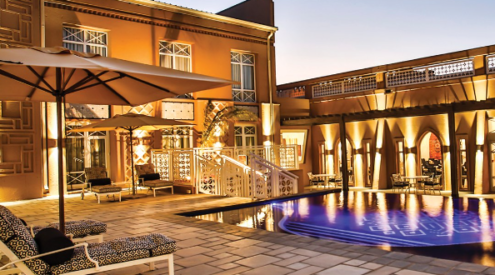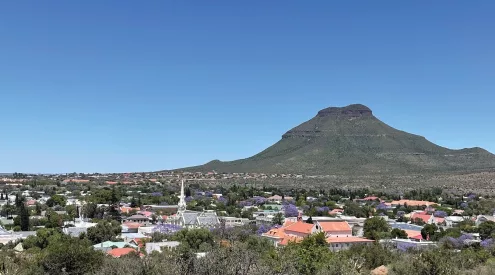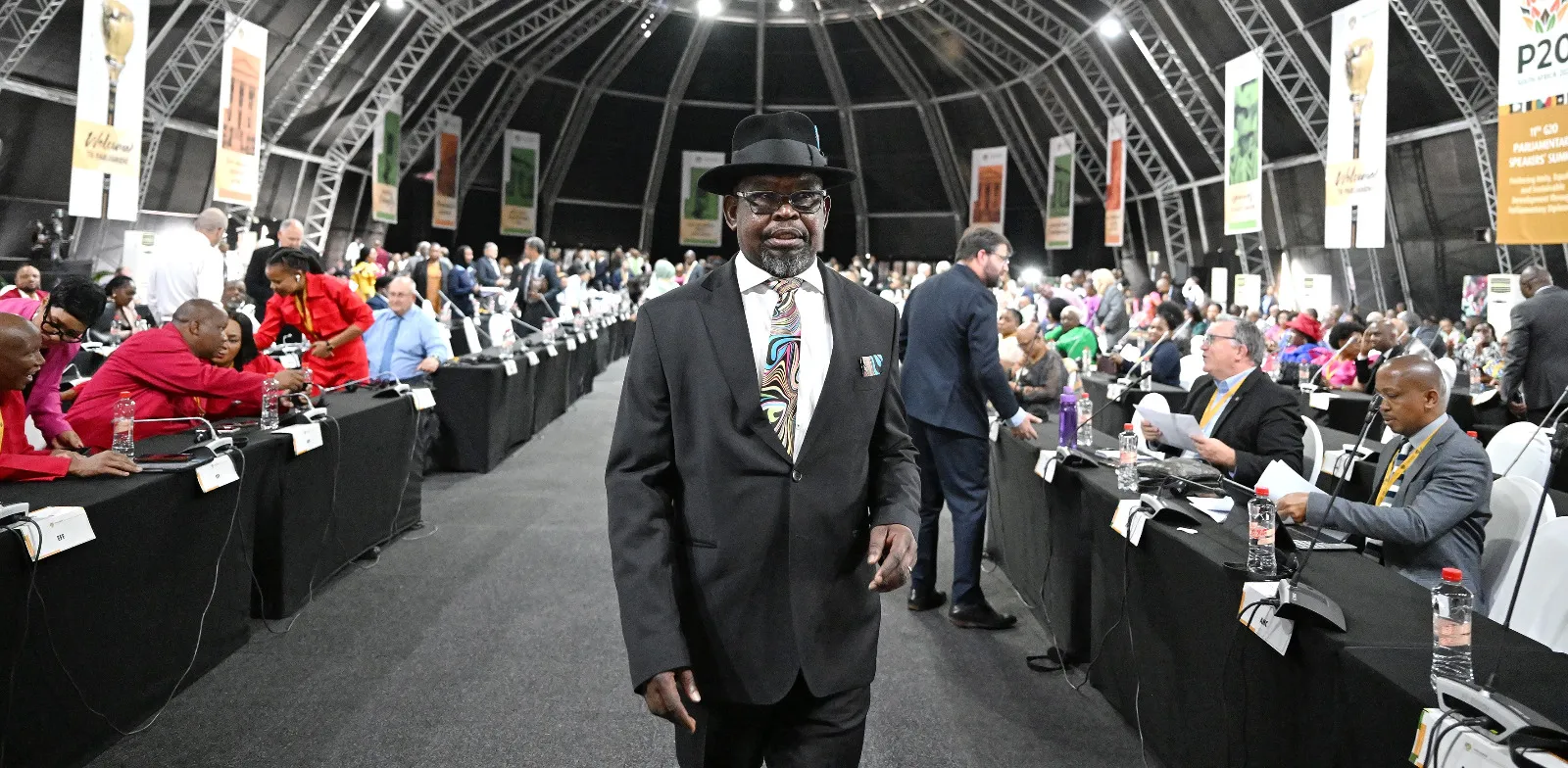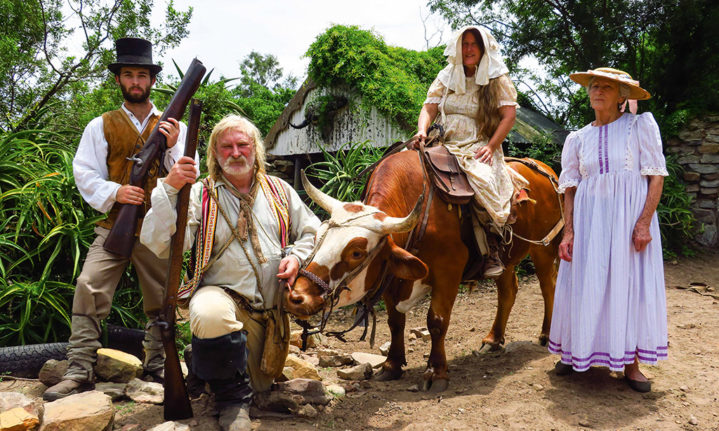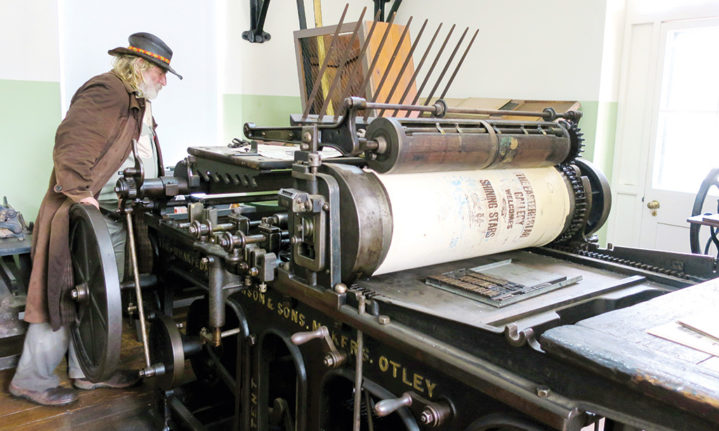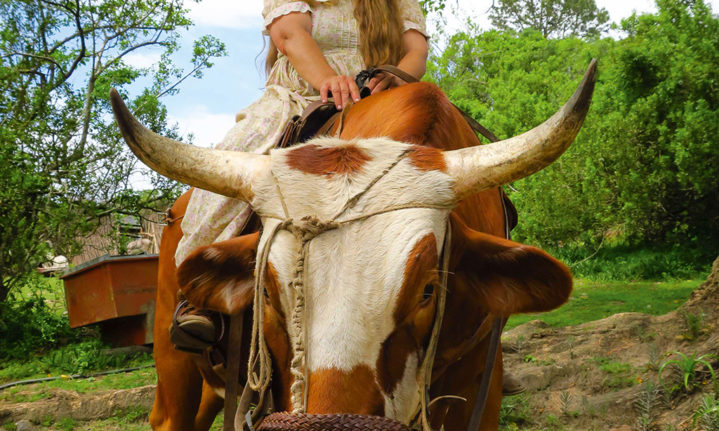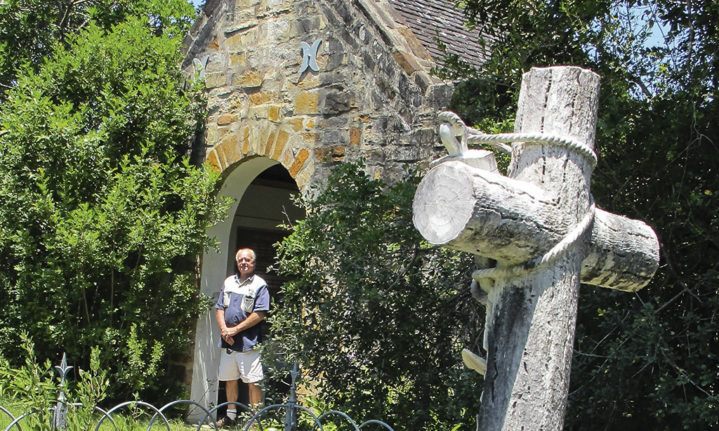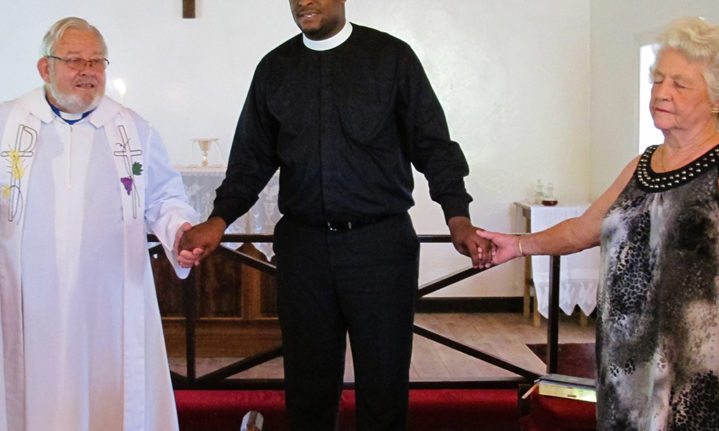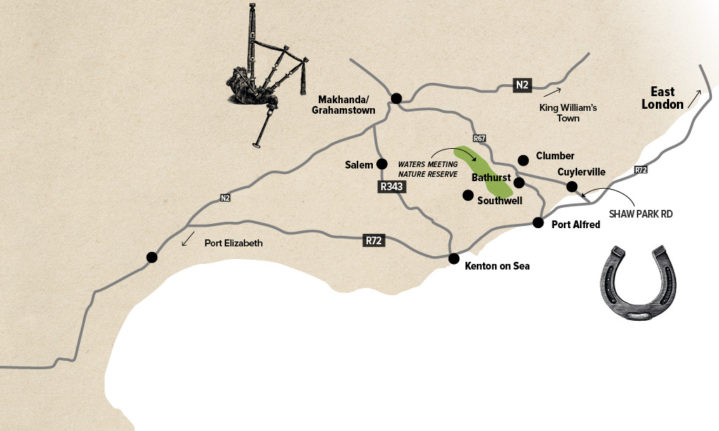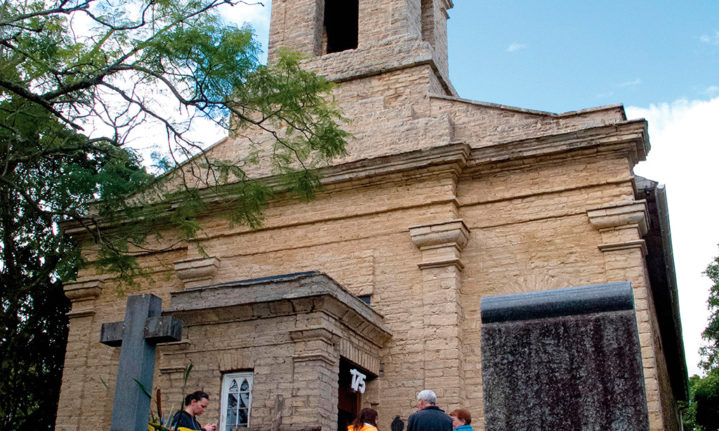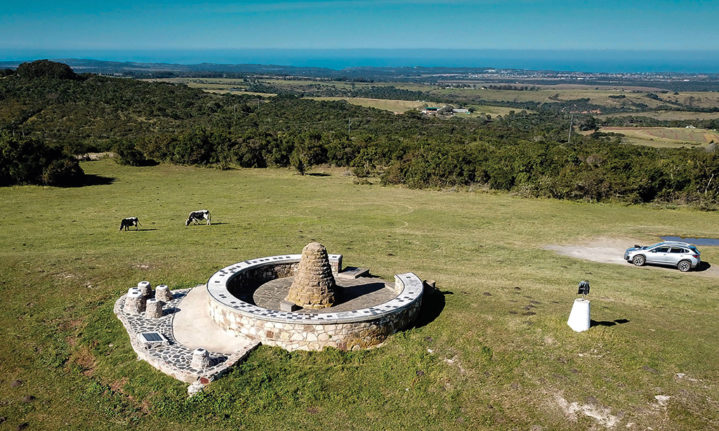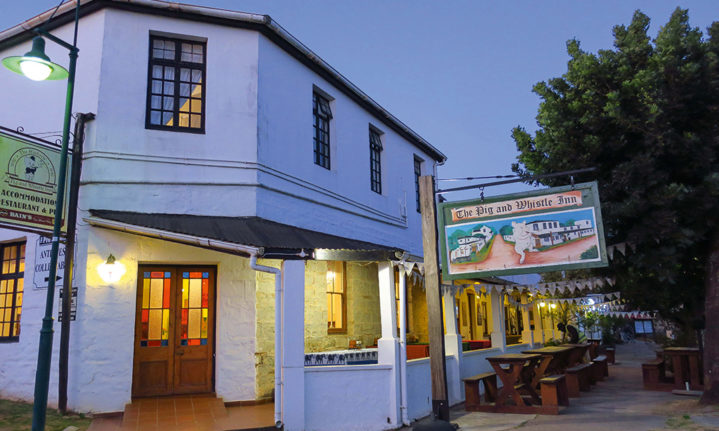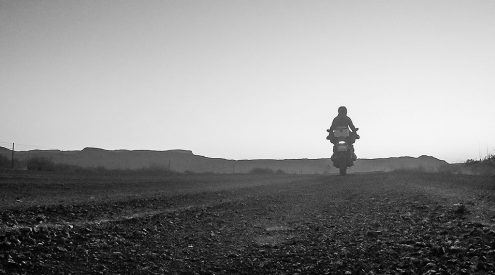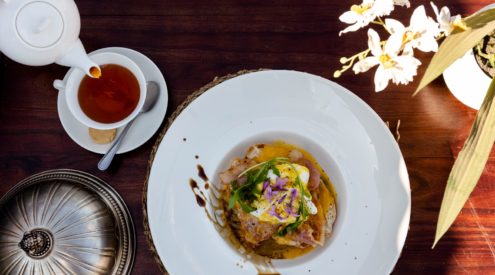An Eastern Cape road trip on the bicentenary of the arrival of the 1820 British settlers reveals a trail of faith and courage.
Words & photographs by Marion Whitehead
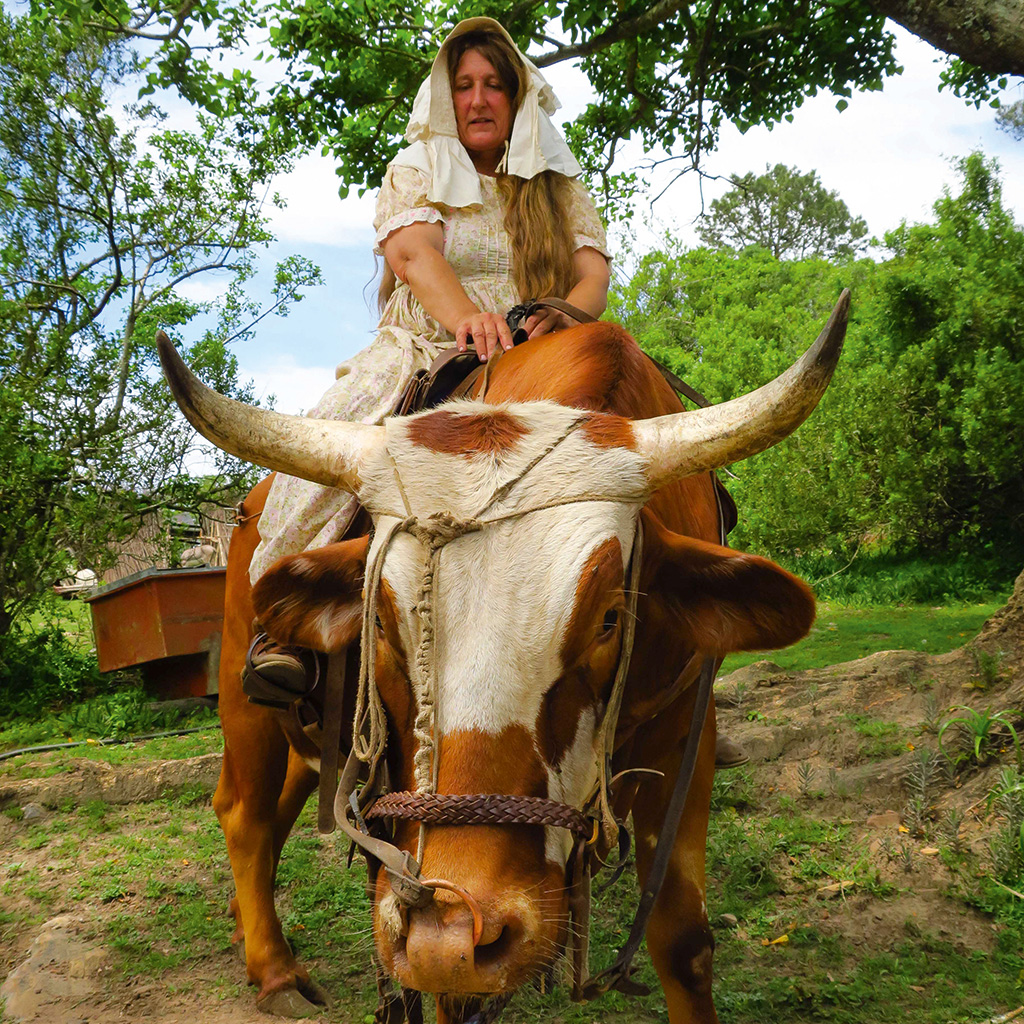
Most of the Settlers couldn’t afford horses, so they copied the Khoi and rode oxen instead. Debbie Mills has trained her SPCA rescue ox, Rooiman, alias Horse, to allow her to ride him. Image: Marion Whitehead
Press freedom, democratic principles and a firm belief in the value of education were ideas the 1820 British Settlers brought with them when they stepped ashore at Algoa Bay as part of an immigration scheme to beef up what was then the Cape Colony’s eastern frontier. They had no idea they would be caught in the crossfire between British forces and the mighty Xhosa nation battling for supremacy. The promise of land and a chance to better themselves lured some 3 800 to risk the unknown as unemployment bit deep during the UK’s industrial revolution.
Nearly 200 years after the arrival of the first ships in Algoa Bay, I took a leisurely road trip along their route from Port Elizabeth to the area they settled west of the Fish River – and discovered that they also left a tangible legacy in the form of quaint churches that formed the heart of the settler communities. Many are now surrounded by game farms, offering impromptu wildlife sightings along the way, as I found when I detoured off the N2 to Makhanda (formerly Grahamstown) to visit the little village of Salem.
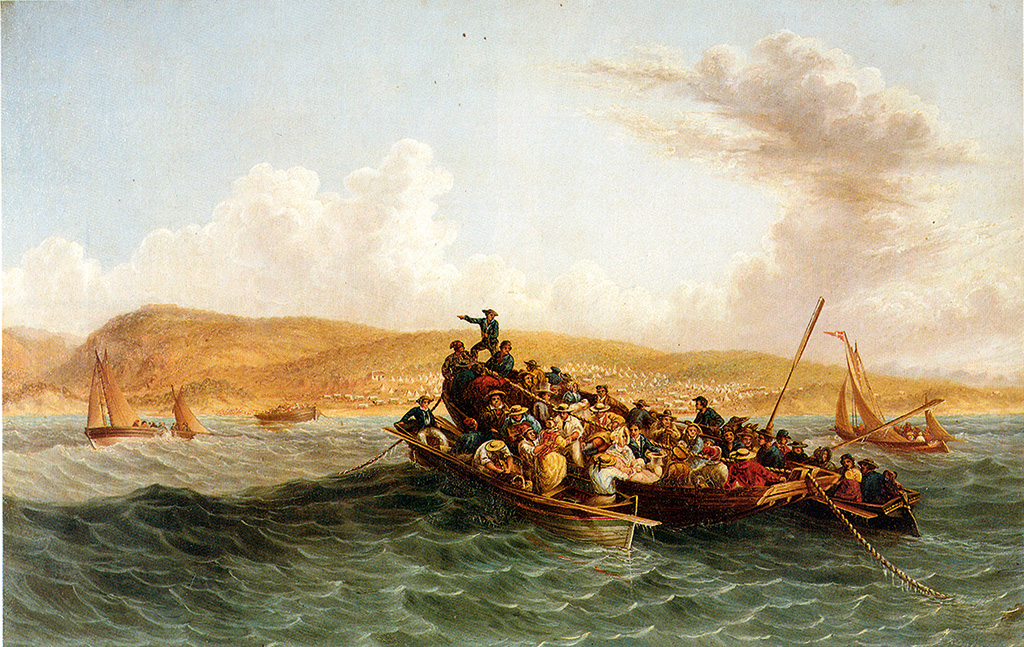
Thomas Baines’s famous painting shows the Settlers being ferried from their ships to the tent-town erected for their reception on the shores of Algoa Bay. The majority had no idea they were to occupy disputed territory on the frontier.
‘Each day driving from Salem to work in Kenton-on-Sea is a mini game drive – I often see giraffe, buffalo and even elephant,’ said Annine de Wet, current owner of Horseshoe Farm in Salem when I booked into her accommodation.
Salem was one of the more successful settlements, thanks to good leadership and a shared faith. Hezekiah Sephton’s party of 344 Londoners were Wesleyan Methodists and their group was the largest of the immigration scheme’s approximately 60 parties, who were transported by Dutch farmers in ox wagons to their allotments. Sephton’s party finally arrived at their spot on the Assegaai River on 18 July 1820, four months after sailing from Britain. It was the middle of winter and bell tents were their only shelter.
‘I don’t know how they managed. It gets really cold in the valley here in winter,’ said Annine, who plays the piano during services at the ‘new’ Methodist Church, built in 1850.
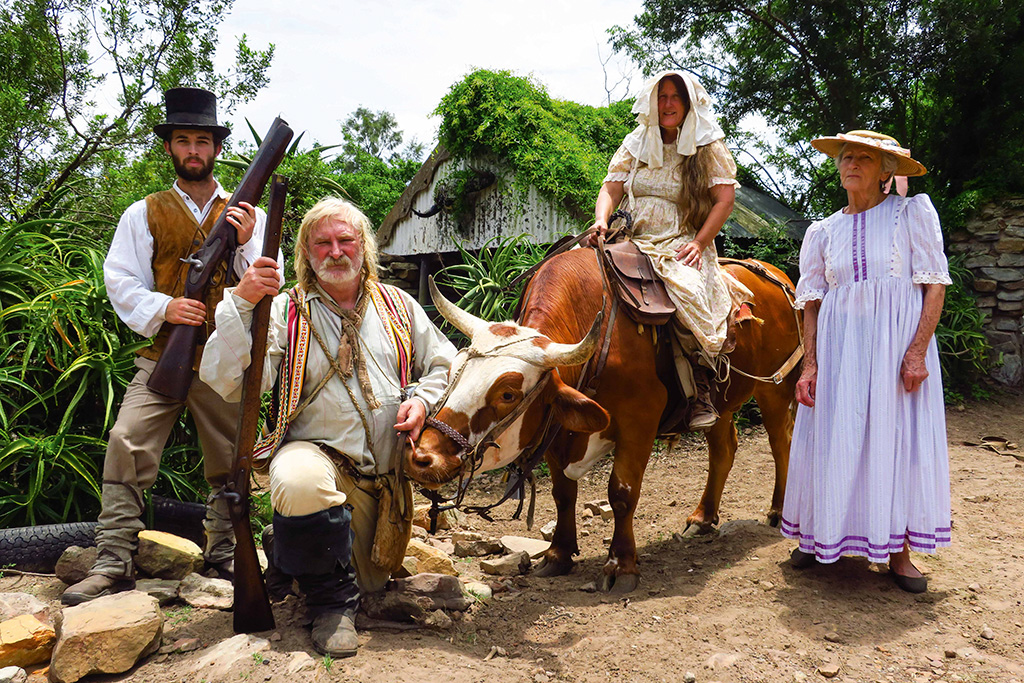
Basil Mills (hatless) will demonstrate old-style agricultural skills at the Bathurst Agricultural Show, together with his wife Debbie on Rooiman, her mom Iris Wells and Ben Coetzee. Image: Marion Whitehead
Soon a village of 75 wattle-and-daub cottages with food gardens took shape, along with a church and a school. But life was tough: rust wiped out their wheat and corn crops three years in a row, stock theft was rife and, after three years of drought, floods destroyed many homes. But it was a close-knit community from day one, said Sheila Riddin of Assegaai Trails, who plays guitar during church services.
William Shaw, their dynamic Wesleyan Methodist minister, set about building a place of worship. The first two were wattle-and-daub structures, but the third was a sturdy stone church erected in 1832 that is still in use today. It doubled as a school and the Salem Academy became a pioneer of education in the Eastern Cape, attracting pupils from far and wide.
On Sunday morning, I joined locals for the service in the larger 1850 church beside the old chapel. Because Salem nurtured pioneer missionaries, such as William Shaw, it is known as the heart of Methodism in South Africa, Sheila explained.
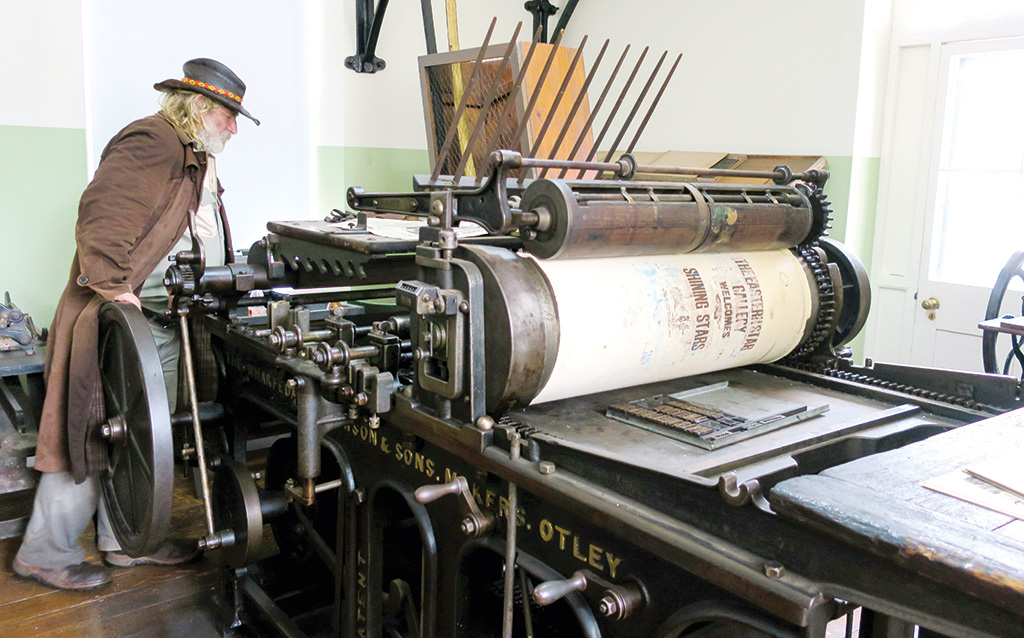
Amwazi’s satellite Eastern Star Printing and Press Museum in Makhanda. Image: Marion Whitehead
Arriving in Makhanda, my gaze was arrested by the 1820 Settlers National Monument on the hill. It dwarfs Fort Selwyn, built on the same koppie when this was a garrison town for British troops. On my last visit, I attended a vibrant performance of Ladysmith Black Mambazo during the National Arts Festival, held each winter holiday to celebrate South Africa’s diversity of cultures.
Today Makhanda is the home of the Eastern Cape’s finest educational institutions. But for me, the holy grail is the Amazwi South African Museum of Literature, where our country’s cultural differences are honoured. I perused the multi-media Voices of the Land exhibition, from /Xam poems to post-democracy writers. The archives house the manuscripts of authors and poets, including Settler anti-slavery and press-freedom activist Thomas Pringle, who wrote poems under a tree at his family’s farm outside Bedford.
Travelling to Bathurst along the patchwork of tar that is the R67, I saw several small country churches perched serenely among pineapple farms. Then I turned off at the Shaw Park Road to attend a talk by Courteney Bradfield, who was instrumental in restoring the Clumber Church, where five generations of his family are buried.
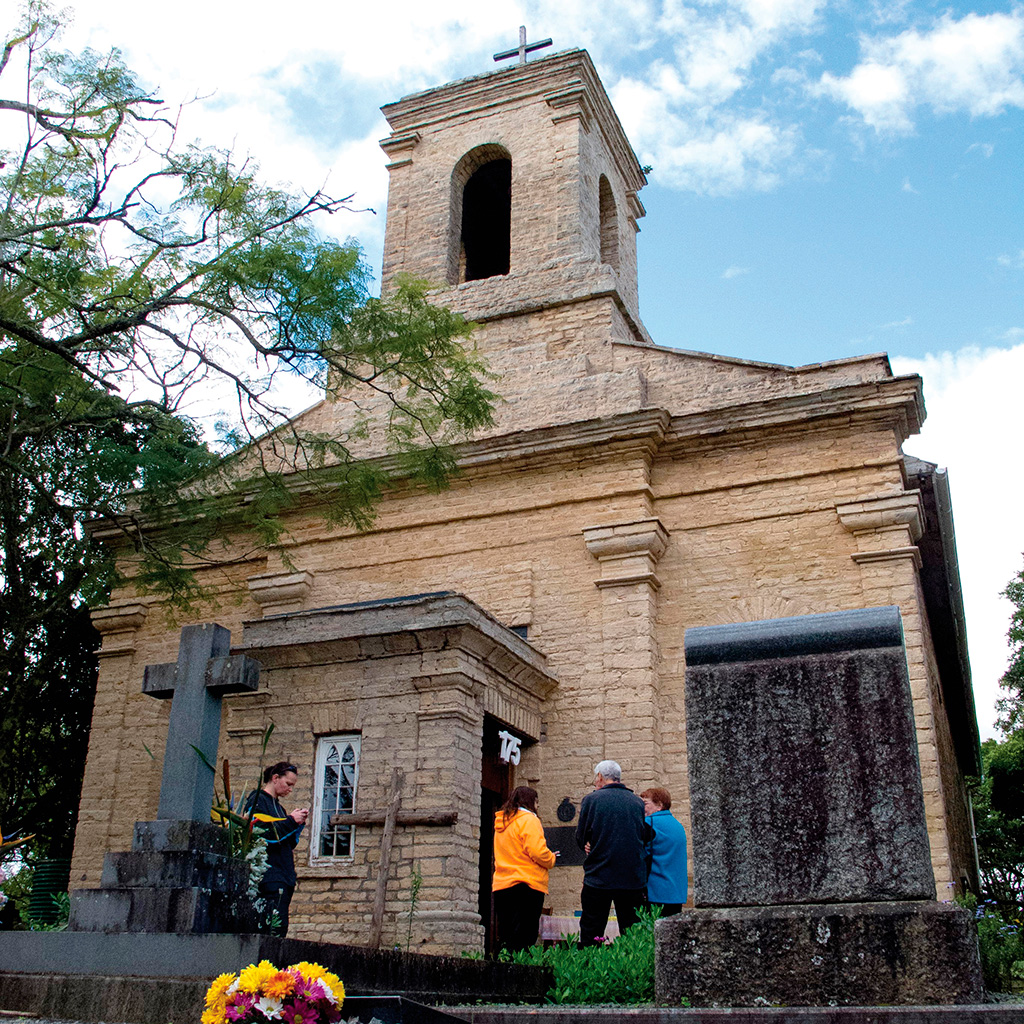
Settlers used St John’s Anglican Church in Bathurst as a refuge during the frontier wars. Image: Marion Whitehead
Despite the fact that the Nottingham party who settled at Clumber were poor artisans, most could read and valued education, Courteney said. Initially they held services under a tree, on occasion being startled by herds of passing elephant. They built their first tiny church in 1825. ‘Their faith in God gave them the courage to surmount the troubles of each day,’ he said, recounting some of the hardships they suffered. The current church is the third one on the site. ‘Their legacy lives on in this beautiful little church, its yellowwood pews and trusses, the teak windows and doors.’
Bathurst was the epicentre of the 1820 settlement scheme and retains the look and feel of an English country village, with old stone buildings and popular pubs. At the Bathurst Agricultural Show this month, there’ll be a special camp demonstrating agricultural skills and crafts the Settlers learnt. Raconteur Basil Mills and his team will make candles, bake bread, play traditional games and exhibit weapons of the day, from spears to cannons.
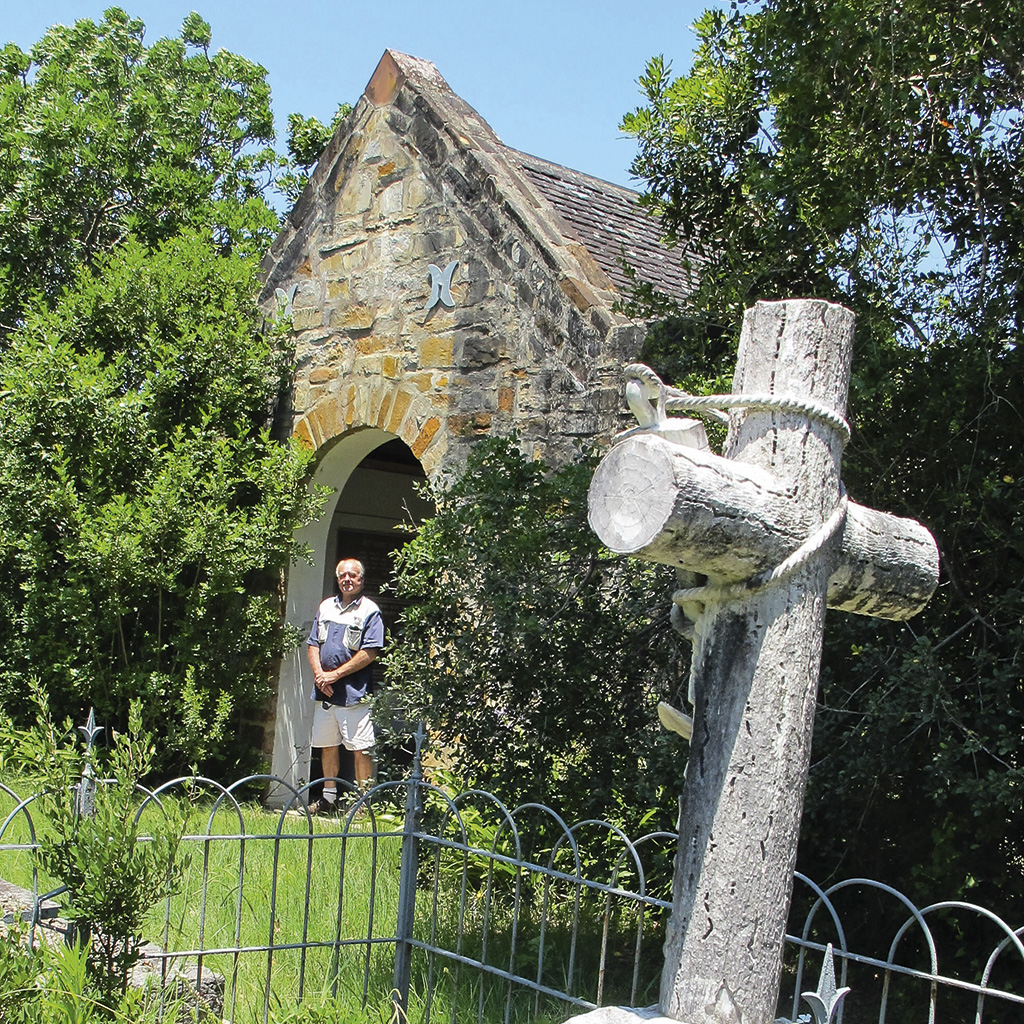
Settler-church cemeteries reveal tales of loss and extreme hardship. Image: Marion Whitehead
‘When they arrived, the Settlers had no inkling of what they faced here on the eastern frontier and really struggled. We want to show how people made a plan,’ Basil told me when I visited him on his farm.
St John’s Anglican Church in the village is acknowledged as an architectural gem among South African churches. Designed by Charles Michell, then surveyor-general of the Cape Colony, in Romanesque style with neo-classical details, the church was completed in 1837, and its stone walls of local limestone have weathered into a golden brown. When I popped in on a Sunday, I found Jay Jackson ringing the old ship’s bell that hangs in the tower over the front entrance to announce the morning service.
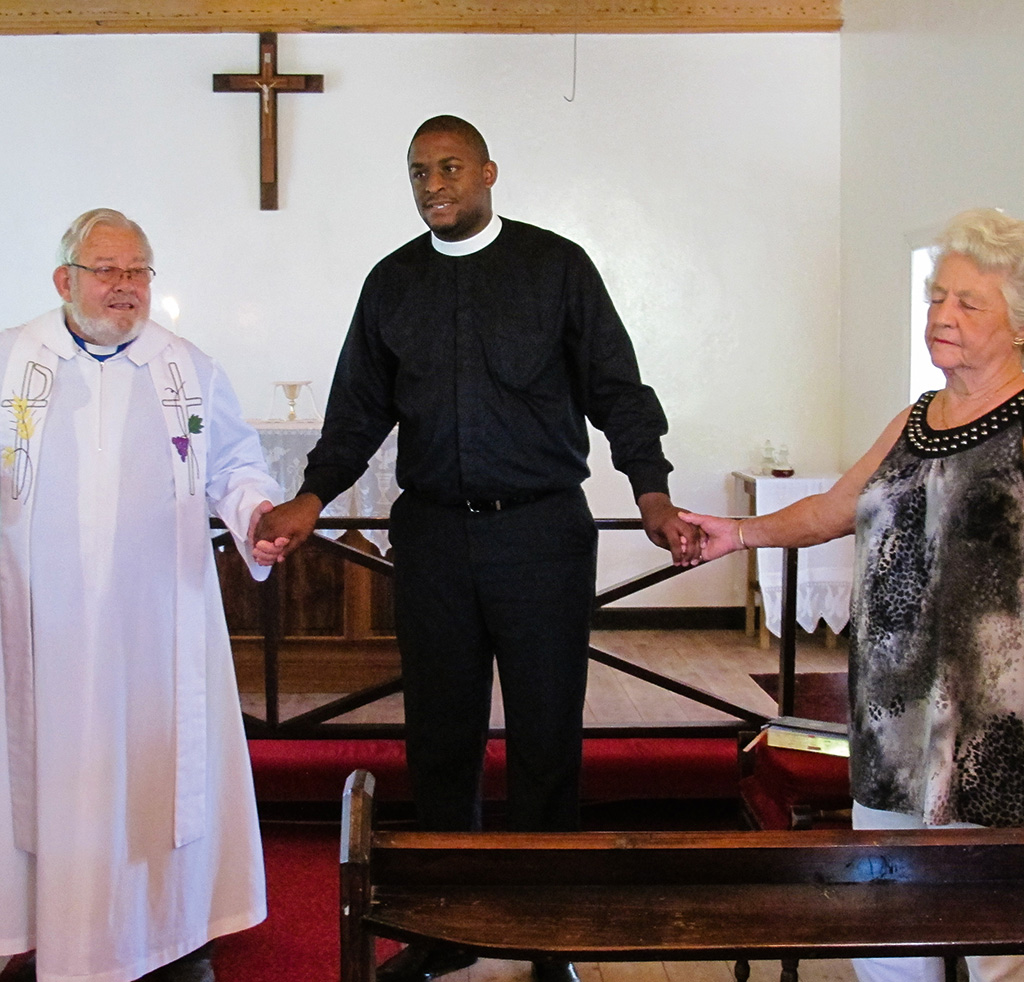
History comes full circle: many ministers preaching messages of neighbourly love to Settler descendants are black members of the cloth. Image: Marion Whitehead
The Toposcope memorial on the hill overlooking the village has had a makeover and a new terrace added. The cairns indicate the direction of Xhosa chiefs in the area and sit alongside the markers showing the location of the Settler parties. ‘It’s a gesture of reconciliation,’ explained Historic Bathurst chairman Tom Barratt.
Travelling east, almost to the old Fish River border, I visited St Mary’s Church at Cuylerville, one of the settlements closest to the old frontier. Like many of the other Settler churches, it also served as a school and, during raids by Xhosa warriors, the Settlers fled their flimsy wattle-and-daub houses to seek refuge within the church’s thick stone walls.
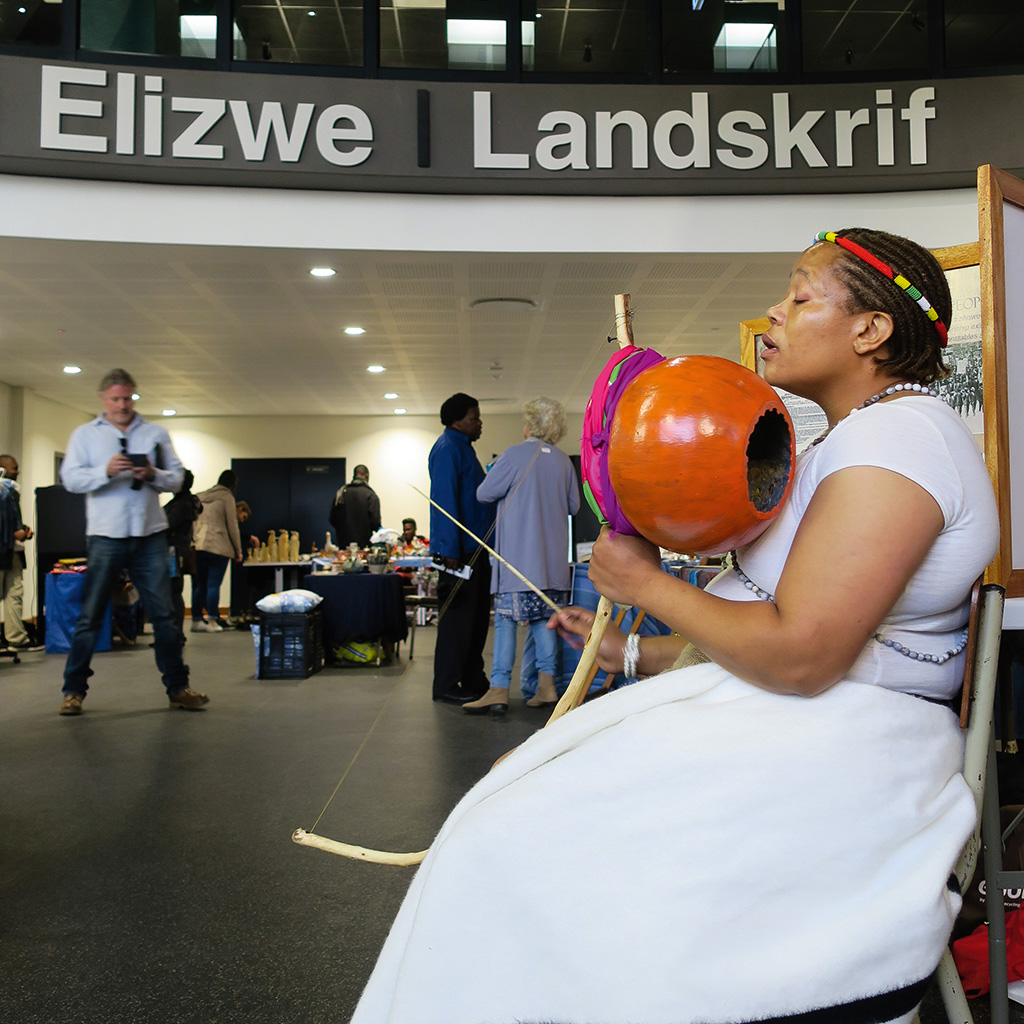
Heritage Day at Amazwi. Image: Marion Whitehead
The little cemetery is a haunt of life stories and the number of small graves brought home how tough life was on the frontier: there was no medical help if your children got sick; elephants and leopards lurked in the bush, and baboons raided any crops that survived drought and the rust.
That they persevered in the face of such adversity took great courage – and not a little faith. After the floods of 1823, many 1820 Settlers moved to towns where they could practise their old trades. Others took up hunting, trading or missionary work, often far beyond the Cape. Subsequent generations made their mark in the educational, judiciary, business, cultural and sporting spheres as well as in agriculture. Despite their small numbers, these Settlers ended up making a big contribution to their new homeland.
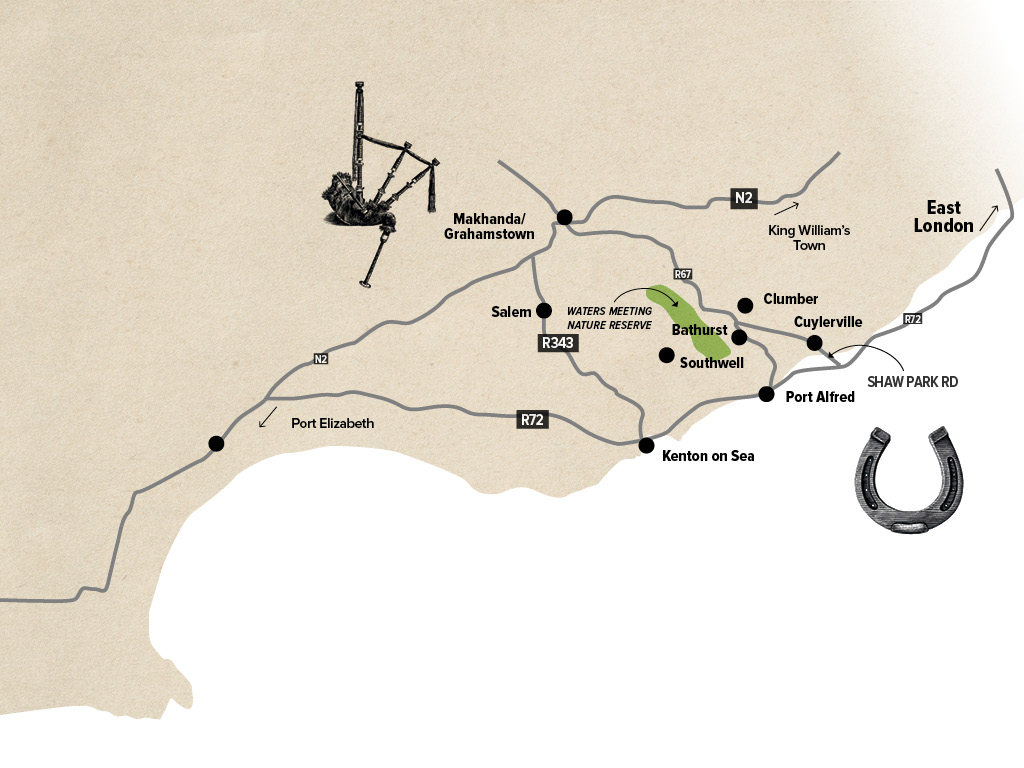
Map: Getaway
Plan your trip
Getting there
Drive the N2 from Port Elizabeth to Makhanda, detouring to Salem on the R343. From Makhanda, travel the R67 south and shortly before Bathurst, turn left onto the Shaw Park Road to visit Clumber Church. Using Bathurst as a base, visit Cuylerville off the R72 east of Port Alfred on Shaw Park Road. And, if you’re in a high clearance vehicle, take the back road via Waters Meeting Nature Reserve to St James’s Church in Southwell.
Stay here
*Horseshoe Farm in Salem offers a room with en-suite bathroom, and a kitchenette. R375 per night (sleeps two). 084-575-1023, [email protected]
*Assegaai Trails outside Salem has seven self-catering cottages. R400 pp sharing. 082-445-1042, assegaaitrails.co.za
*Glenfillan Lodge is an 1812 farmhouse built on an outspan near Southwell. It sleeps 10 in five en-suite bedrooms. There is a large kitchen for self-catering. From R500 pp for groups smaller than six. (R2 800 for the whole house). 084-515-1016, find it on Facebook.
*The Historic Pig and Whistle Inn in Bathurst was built by Thomas Hartley and used as his blacksmith shop before his enterprising widow started her accommodation business. From R370 pp sharing, with en-suite. 046- 625-0673, pigandwhistle.co.za
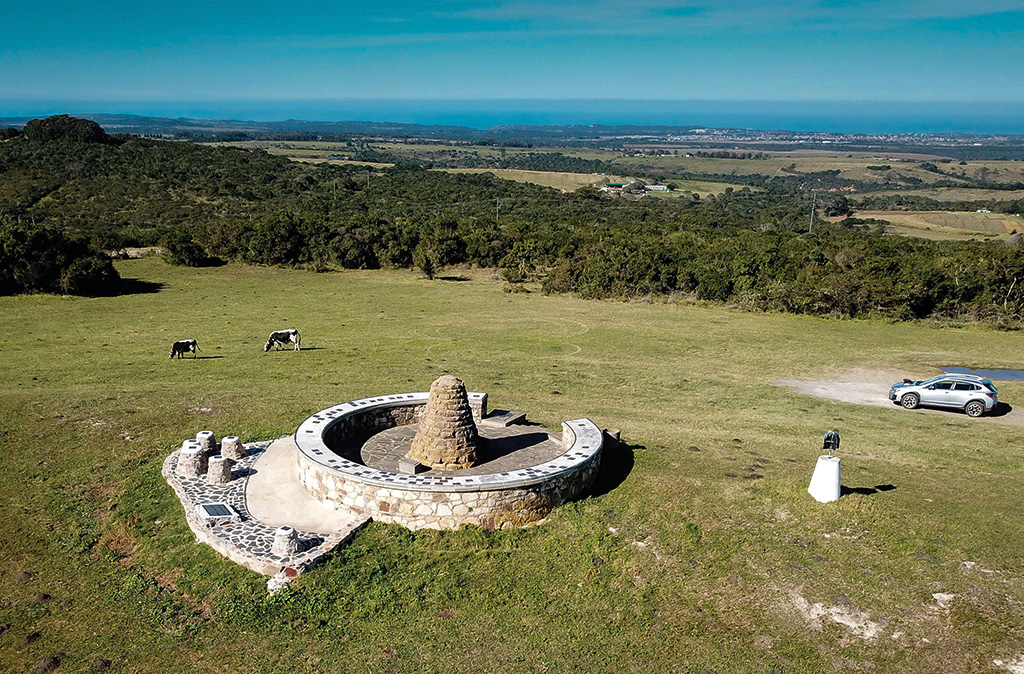
A new terrace has been added to the Toposcope memorial at Bathurst to honour the area’s Xhosa chiefs. Image: Marion Whitehead
Do this
Country church route: Salem’s two churches are open daily with services held in English every Sunday at 8.30am. St John’s Anglican Church and the Methodist Chapel in Bathurst have weekly Sunday morning services at 8.30am and 9am respectively. Clumber Church has a service every fourth Sunday at 11am. St Mary’s in Cuylerville has one on the first Sunday of the month and St James’s in Southwell is on the third Sunday – both are at 11am. (Enquiries for Anglicans: 046-624-1236 and for Methodists: 046-624-2420).
In Makhanda, visit the 1820 Settlers Monument, open daily with free entry (046-603-1100) and Amazwi South African Museum of Literature, open on weekdays, and also has free entry (046-622-7042).
Look out for the reenactment of an ox wagon on trek to camp at the four-day Bathurst Agricultural Show from 2–5 April, Bathurst Showgrounds. Adults R60, kids R20, under 6s free. 046-625-0759, bathurstshow.co.za
Join Bathurst’s 200th birthday bash at a Long Table lunch in the Pig and Whistle garden on 22 May, followed by sundowners at the Toposcope, to the accompaniment of bagpipes. facebook.com/Bathurst200
Do the historical route, starting at the Bathurst Agricultural Museum (079-987-9507). Buy a map from Relix & Thingz for R5. Visit the Toposcope, the Old Powder Magazine (where gun-powder was stored), St John’s Anglican Church and the Methodist Chapel. There are guided tours of Bradshaw’s Mill for R40 per adult (076-294-6516).
Umzantsi Afrika is running a guided, commemorative 1820 Settler bicentennial tour of the Eastern Cape in April for three days. R4 310 pp sharing, including accommodation and transport. 041-368-9008, umzantsi.co.za
For Settler bicentennial events and family reunions, visit 1820settlers.com. For more info: call 046-624-1235, sunshinecoasttourism.co.za.
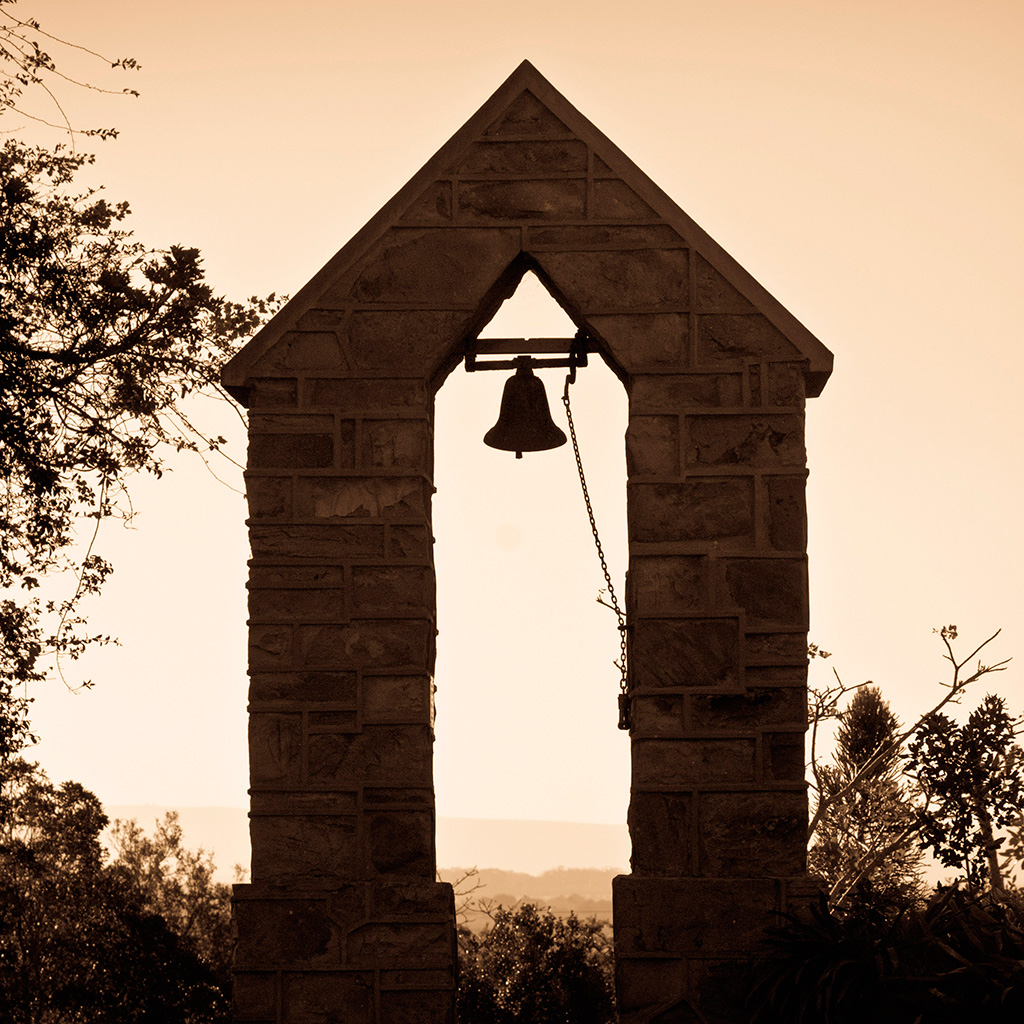
The bell at St James’s Anglican Church in Southwell. Image: Marion Whitehead
Eat here
In Makhanda, Haricots in New Street is a favourite (046-633-2150), while budget-friendly prices at Red Cafe in High Street (046-622-8384) and Revelations in Pepper Grove Mall (046-636-2433) attract student customers.
In Bathurst, top picks are Lara’s Eatery (071-370-1019), the Historic Pig and Whistle Inn (046-625-0673) and the Village Bistro (072-460-4823).
Watch this
Peterloo, the movie about the massacre of pro-democracy protestors in Manchester, reveals the dire conditions in the UK that made emigration to South Africa attractive.
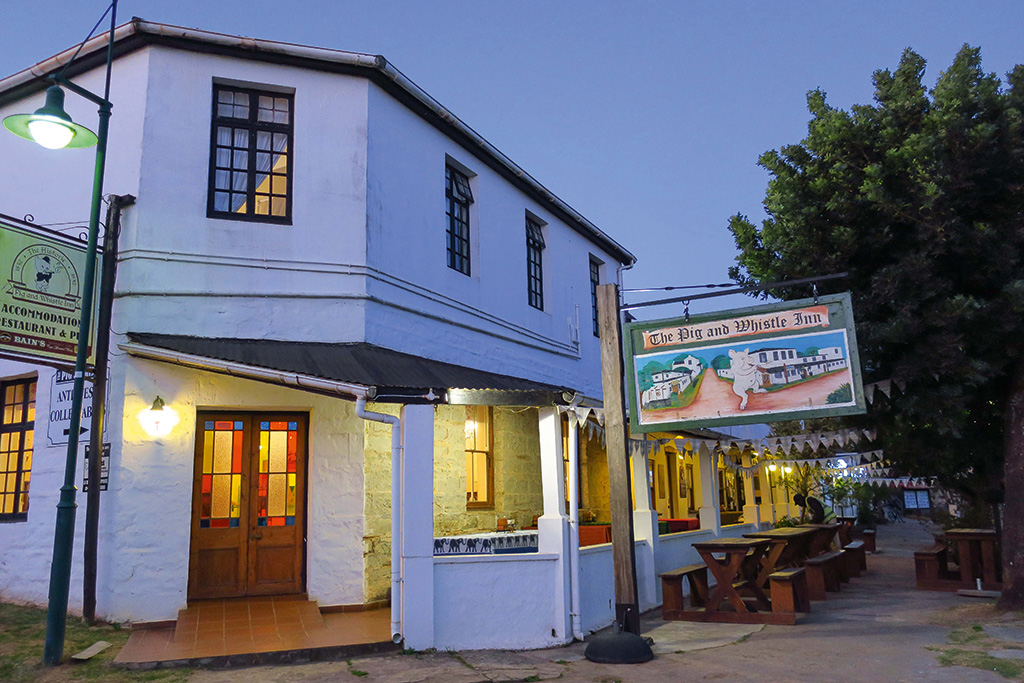
Pig and Whistle. Image: Marion Whitehead.
Read this
Salem: Place of Peace (privately published) compiled by Sheila Riddin, is a pictorial history of this Settler village.
Roughing It: 1820 Settlers in Their Own Words (Tafelberg, 2016) by Ralph Goldswain recounts the stories of the folk who were sent to the Cape Colony’s eastern frontier.
Fortress of Faith by Shirley Krsic is a booklet on the history of St John’s (available at the church).
Also read
This article was first published in the April 2020 issue of Getaway magazine.
Get this issue →
All prices correct at publication, but are subject to change at each establishment’s discretion. Please check with them before booking or buying.






